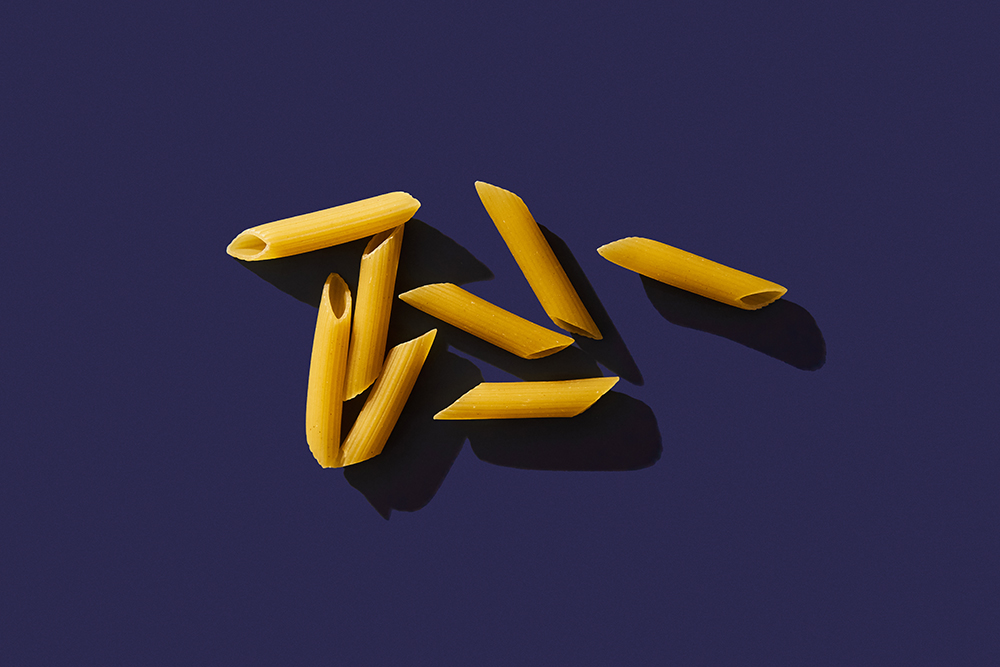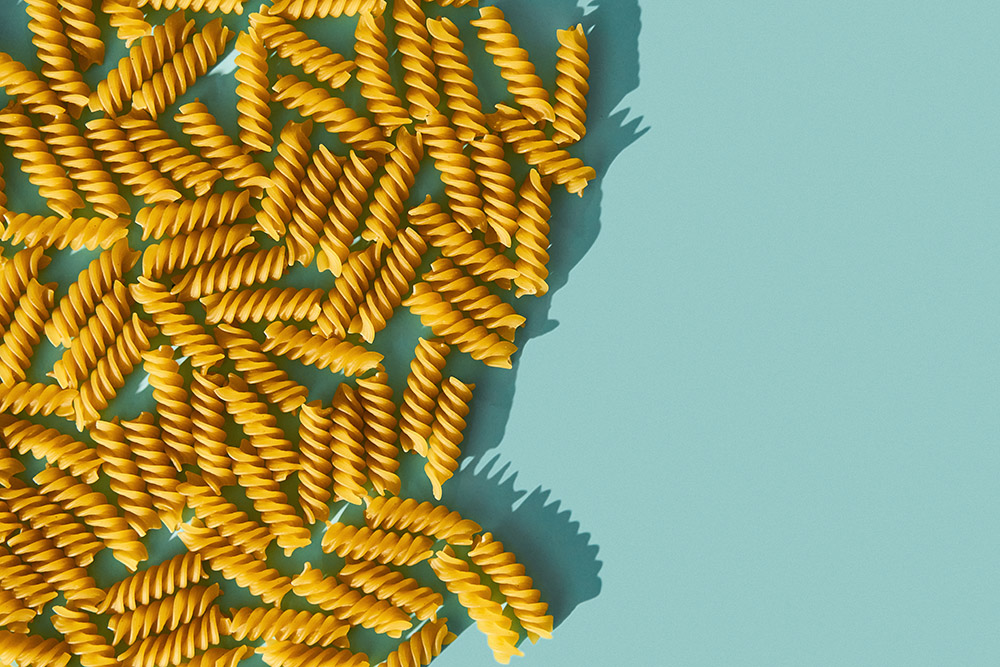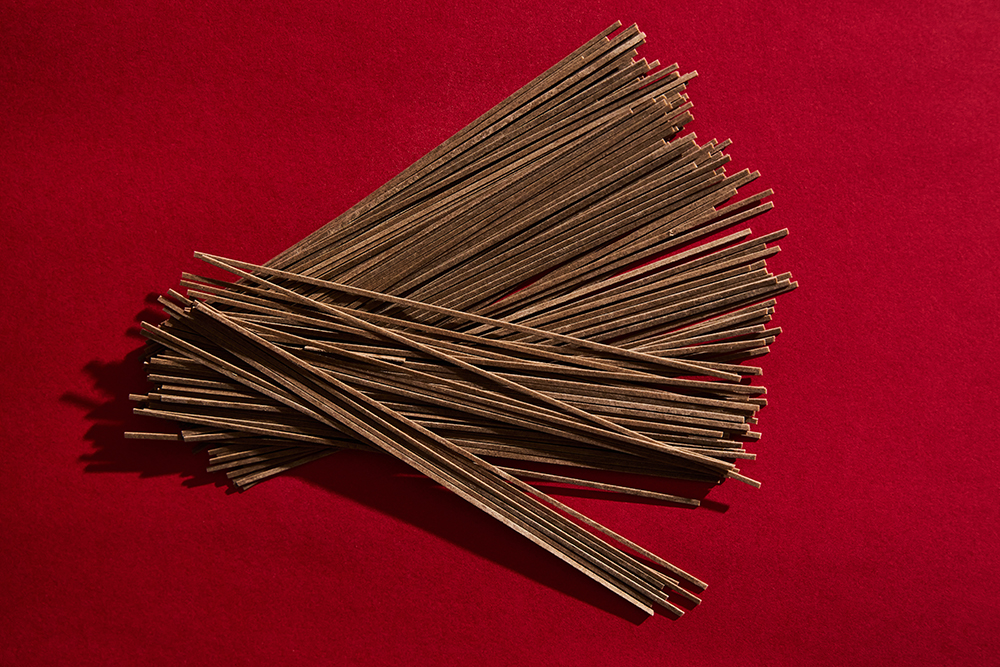It so happened that the elementary, it would seem, kitchen operation under the name of “boil pasta” is covered with a bunch of myths, secret techniques and other recommendations, far from always correct.
What is the reason? Is it that mankind cannot come to a single correct consensus on how much water to pour, how much to salt, whether to add oil to the water or not?
As someone who loves to get to the bottom of things, I decided to gather and structure all the information from reputable sources on this topic in one place so that I don’t have to describe the same thing every time in my pasta recipes.
Getting to the point, how do you cook pasta in a nutshell?
If you don’t have time to read and get into it, below is a quick tutorial and my method:
- Fill the pot/saucepan with water so that the water covers the pasta – this is enough.
- Salt at the rate of: 10 g salt per 1 liter of water. For fine and table salt it is about 2 teaspoons (without a slide) per 1 liter or ~4-5 pinches (between thumb, index and middle fingers) per liter. This is valid for fine and medium grinds, for larger grinds you need to take more salt (in pinches, not grams).
- Place over high heat and cover with a lid to make the water boil faster.
- When boiling remove lid and add pasta, reduce heat and time (cook according to package directions until fully cooked or 1-2 minutes less for al dente) .
- After about a minute, be sure to stir the pasta. For long pasta like spaghetti, stir the pasta a couple more times at minute intervals. For short pasta, in most cases one stir will be enough to keep the pasta from sticking, but you can stir it again after a minute just in case.
- When the timer rings, drain the water, reserving about 100 ml of the water in which the pasta was cooked if you plan to make a sauce.

How much pasta per serving?
Use about 70-90 g of dry pasta to serve as a main course and about 50 g for a side dish.
Which paste to choose?
All pasta tastes the same, you’ll say, and you’d be right, but not all the way through.
The point is that initially it’s flour and water, but when you add the sauce everything changes. That’s when the type of pasta used comes to the forefront. The shape determines how the pasta interacts with the sauce, whether it will hold together or end up in the plate next to it separately.
Long, narrow shapes
Spaghetti, linguini, fusilli lungi, vermicelli, capellini (angel-hair) and spaghettini are served with light seafood sauces or cream or butter-based sauces. Capellini are great with very light sauces, while spaghettini are ideal for tomato and olive oil based sauces.
Long strip molds
Choose tagliatelle, pappardelle, fettuccine, mafaldine, linguine fini and bucatini for thick, meaty sauces. Linguine fini goes well with seafood, while bucatini are great for tomato-based sauces.
Shell shapes
Serve pasta in the form of shells – conchiglie and lumake, as well as orecchiette, with rich creamy or meaty sauces. Because of their shape, large shells are great for stuffing. Orecchiette, which resemble small ears, are ideal for sauces that can accumulate in their recesses.
Spiral and twisted shapes
Fusilli, trofie, strozzapreti, casarecce, gemelli, rotini and giremolle are served with light, delicate sauces such as pesto. Rotini and giremolle hold the sauce perfectly.
Tubular molds
Penne, rigatoni, pasta, paccheri, ziti and cannelloni are suitable for thick vegetable sauces, baked cheese dishes and for bolognese or ragu. Ziti are often used in casseroles and cannelloni are ideal for stuffing and baking.
Miniature forms
Orzo, fregola, canestrini, stelline, anellini and risini are great for soups and stews or pasta salads. Anellini are small rings, use for children’s soups, and risini resemble rice, ideal for light soups and salads.
Stuffed pasta
Ravioli, tortellini, cappelletti, agnolotti and agnolotti are usually served with light oil or butter-based sauces because of their flavorful fillings. Agnolotti and agnolotti offer a variety of fillings, bringing unique flavor notes.
How much cooking water do you need?
Some time ago I came across the so-called “rule 1110”, which states that for every 100 g of pasta, you should take 10 g of salt and 1000 ml, that is 1 liter of water. This is the opinion of many sources and Italians among them. However, there are more and more opinions according to which the use of excessive amounts of water when cooking pasta is not necessary and can even worsen the result.
And here’s why:
- Let’s start with the basics – the amount of water does not affect the flavor of pasta. I have not personally conducted such experiments, but Harold McGee of the New York Times, J. Kenji Lopez-Alt in The Food Lab, and many other famous chefs whose opinions I’ve found on the Internet and in books say so.
- More water = longer process. The more water you pour into the pot, the longer it will take to boil. By the way, the size of the pot also has an effect – the bigger the pot you take – the longer it will take to boil because it has more contact with air, which increases heat loss.
- Based on the previous point, using less water saves energy.
- The less water, the more starchy it turns out. Starch not only helps thicken the sauce, but it is also an emulsifier. That’s why even a small amount of it will turn oil-based sauces, like shrimp pasta or chili and garlic pasta, into creamy sauces that can coat the pasta much better than just oil.
What are the conclusions?
From the above – it is recommended to cook the pasta in an amount of water that is barely enough to cover it. This will save you time, salt, water and energy. It will also help make your sauce thicker and more enveloping.
On the other hand – when cooking long pasta a la spaghetti, a large pot and plenty of water can simplify the process and make the cooking more even.

Why and how much to salt?
Salt is an almost equally important ingredient in pasta itself.
During cooking, salt penetrates the pasta much more evenly and enhances its flavor than if you salt cooked pasta. It is also believed that salt affects the texture of the pasta, making it more “al dente” – the perfect balance of softness and firmness (which is somewhat questionable in my opinion), and that salted pasta helps the sauce hold together better, affecting the overall flavor profile of the dish.
How much salt?
There is no unambiguous right answer to this question. The water should be salted – that’s a fact, but how much is a matter of personal taste preference.
Remember that the amount of salt depends on the amount of water, not the amount of pasta.
Start with 1% (10 g per 1 liter of water) and vary from 0.5% to 2% (5 g – 20 g per liter) according to your taste.
When to pickle?
There is an opinion that water should be salted after boiling. They argue that in hot water the salt will dissolve faster. It’s pointless to argue with this, but if you salt the water at the beginning it will not be in the same hot water after a while and dissolve even better, because it will spend more time in it?
My opinion – salt whenever you want, the main thing is before adding the pasta. I salt cold water because it’s more convenient: put the pot on a scale, measure the water, tare the scale, add the right percentage of salt, put it on the fire
An important thing to remember: if the water boils for a long time – it boils out (thanks Cap), but the salt does not go anywhere, so your water becomes saltier and the pasta may be over-salted.
They say “the water for pasta should be as salty as sea water”, is this true?
Be sure to ask them which sea you should focus on. Because, for example, the salinity of the Baltic varies from 3% to 14%, the salinity of the red sea is about 40%, and the dead sea is up to 300%. But even if you take the generally accepted, average value of 3.5% – it is still too much and you will get over-salted pasta.
As you realize this statement is false and should be taken with some degree of convention. The water should be salty, but not that salty.
How and how much to boil
To cover or not to cover?
Until recently, I thought that after adding the pasta to the water – you need to cover the pot with a lid to make the water boil faster. It turns out that this is not necessary at all. Moreover, the water doesn’t even have to reach boiling point to put the pasta in it. But more on that later.
Is boiling water necessary?
In brief, it turns out that it is not. Before I started writing this text, I hadn’t even given it much thought. But several reputable sources say that the pasta will boil in colder water.
It doesn’t affect the result as much as the amount of water, so I haven’t switched over yet and cook it the old-fashioned way. But if you like experiments – try this method: bring salted water to a boil, put the pasta, cover and turn off the heat. Cook according to the instructions on the package, stirring after 30-40 seconds.
All of the above applies to dry pasta and does not work with fresh egg pasta.
Why does the paste stick together?
The pasta sticks together because a lot of starch is released in the first couple of minutes of cooking. It is therefore important to stir the pasta well about a minute after adding it to the pot and again about a minute later.
This will help distribute the excess starch and prevent sticking. This is often enough, but depending on the type of pasta and the amount of water, it may be necessary to stir the pasta further in the middle of cooking and towards the end of cooking.
Maybe add some olive oil to the water?
Adding olive oil or any other oil to water does nothing to prevent it from sticking.
In fact, it may even be counterproductive. It just floats on top and when you drain the water, some of the oil will envelop the pasta and prevent the sauce from spreading evenly later, but more on that below.
How long to cook the pasta?
Cook according to the instructions on the package.
If the package does not say anything (although I have not met such pasta) – taste and cook until almost fully cooked (when there is still a small undercooked part in the core of the pasta, white in color) – for al dente or a minute – two more for full cooking.
In fact, it will be enough just to be guided by the taste, as soon as the taste of raw pasta is gone – they are ready.
Al dente or raw pasta?
You don’t boil pasta for a minute or two less, not because you like undercooked pasta. Pasta is undercooked so that when you finish cooking it in the sauce it doesn’t overcook. Well, and also because the elastic texture of pasta tastes better than cooked and mushy pasta. In addition, pasta (and any other product) continues to cook for some time, even after you have drained the water.

End of cooking
Save and drain the water
When the pasta is ready, drain the water, saving about 100-150 ml of the water in which the pasta was cooked. This is necessary if you are going to combine the pasta with the sauce to adjust its consistency, to make it thicker and more sauce-like. The thing is that the starch that was washed off the pasta during the cooking process will help you in this. Remember Chinese and other Asian recipes? We add starch to make the sauce thick and glossy, it’s the same here, only instead of starch we use water.
Of course you shouldn’t bother with this if you’re just going to dress your pasta with ketchup (and I’m not judging you, if anything, at all), but even with store-bought pasta sauces like pesto and other pasta sauces, adding starchy water can have a positive effect on flavor and texture.
Maybe put a little oil on it to keep it from sticking together?
Or maybe you shouldn’t. If you plan on topping your pasta with a sauce, adding oil won’t do any good. The oil will create a film on the surface of the pasta, which will prevent the sauce from bonding well with the pasta. For the same reason, it is recommended to saute the salad first and only then dress it with oil.
Then how do I make sure the pasta doesn’t stick together while I’m making the sauce?
Very simple – prepare the sauce in advance. If, after the pasta is ready, you immediately top it with the sauce – you won’t need any oil.
Or maybe rinse the paste so it doesn’t stick together?
This should not be done either. Pasta is rinsed only if it is going to be used in salads or other cold dishes. By the way, if you are going to use them for a salad, it is not forbidden to dress them with oil after rinsing.
Good luck with your culinary experiments!
